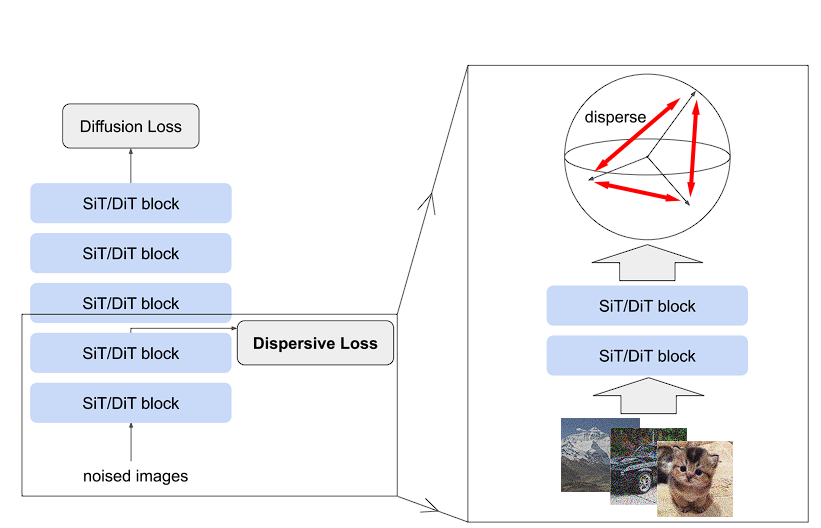Dispersive Loss is a Minimalist Step Toward Smarter Diffusion Models.
Diffusion models have redefined the frontiers of generative AI, capable of transforming noise into highly structured, realistic images. But as these models grow, a quieter question lingers in their inner architecture:
how well do they truly understand the space they generate from?
While diffusion models excel at learning the denoising trajectory, they often under-regularize their internal representations. These hidden features: the model’s evolving thoughts tend to cluster too tightly, risking semantic collapse. This means the model may know how to reconstruct an image, but not how to differentiate what it has learned.
In this context, Dispersive Loss is a simple yet elegant regularization technique that encourages the model to disperse its internal representations to think more broadly, without losing focus. Unlike traditional fixes, it doesn’t require external pre-training, large encoders, or extra parameters. It simply redefines balance within the model itself.
